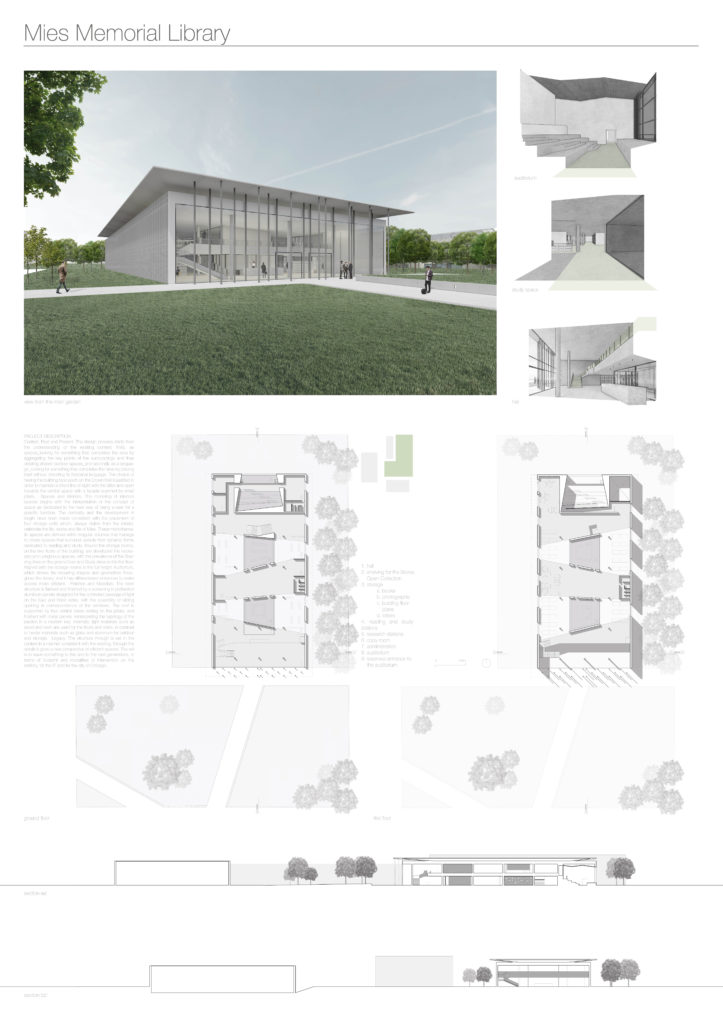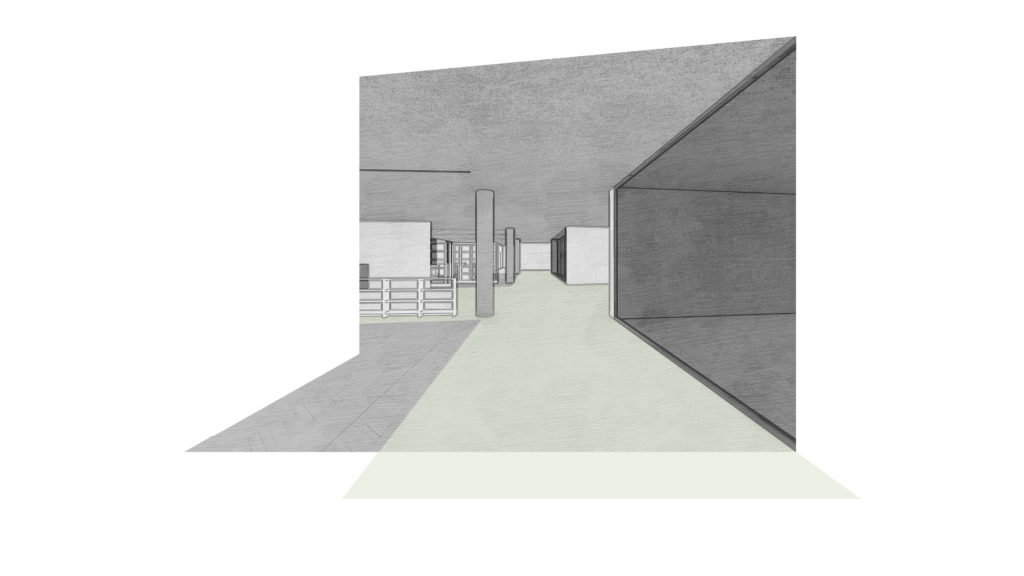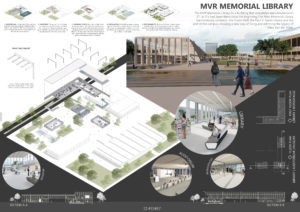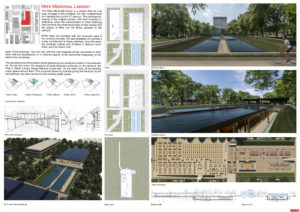PROJECT DESCRIPTION:
Context, Past and Present. The design process starts from the understanding of the existing context: firstly, as spaces_looking for something that completes the area by aggregating the key points of the surroundings and thus creating shared outdoor spaces_and secondly as a language_looking for something that completes the ‘area by placing itself without distorting its historical language. The choice of having the building face south on the Crown Hall is justified in order to maintain a direct line of sight with the latter and open towards the central space with a facade scanned by small pillars.
Spaces and Interiors. The modeling of interiors spaces begins with the interpretation of the concept of space as dedicated to the best way of being a user for a specific function. The centrality and the development in length have been made consistent with the placement of four storage units which, always visible from the interior, celebrate the life, works and life of Mies. These monothematic spaces are defined within irregular volumes that manage to create spaces that surround outside their dynamic forms dedicated to reading and study. Around the storage rooms, on the two floors of the building, are developed the necessary and congruous spaces, with the prevalence of the Shelving Area on the ground floor and Study Area on the first floor. Aligned with the storage rooms is the full-height Auditorium, which shows the recurring shapes and geometries throughout the library, and it has differentiated entrances to make access more efficient.
Finishes and Materials. The steel structure is flanked and finished by a screening in perforated aluminum panels designed for the controlled passage of light on the East and West sides, with the possibility of sliding opening in correspondence of the windows. The roof is supported by four central cores resting on the pillars, and finished with metal panels, reinterpreting the typology of the pavilion in a modern key. Internally, light materials such as wood and resin are used for the floors and stairs, in contrast to harder materials such as glass and aluminum for outdoor and storage.
Legacy. The structure through is set in the context in a manner consistent with the existing, through the details it gives a new perspective of efficient spaces. The will is to leave something to this and to the next generations, in terms of footprint and modalities of intervention on the territory, for the IIT and for the city of Chicago.






